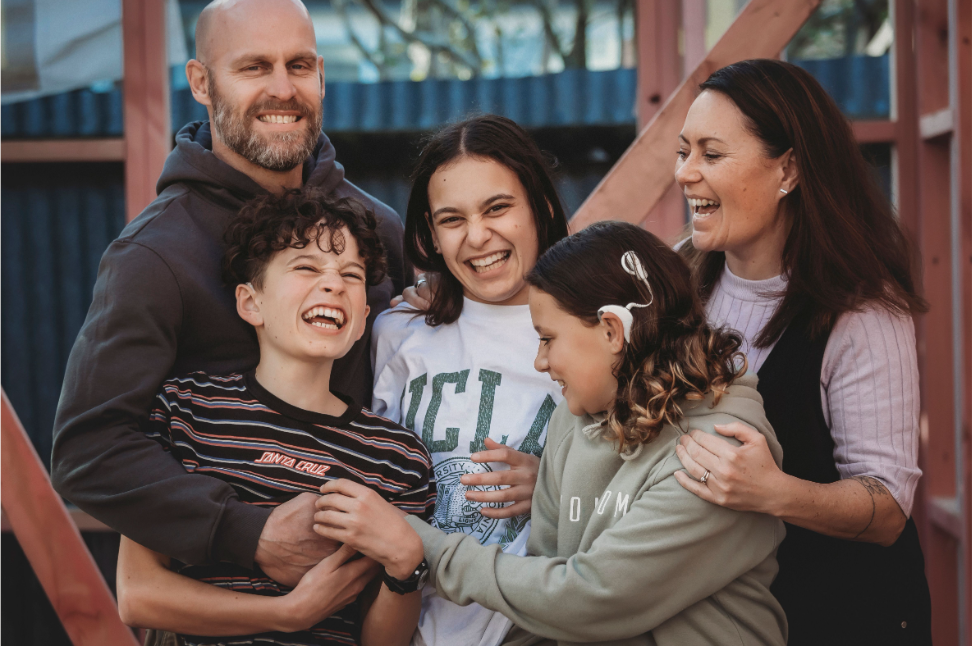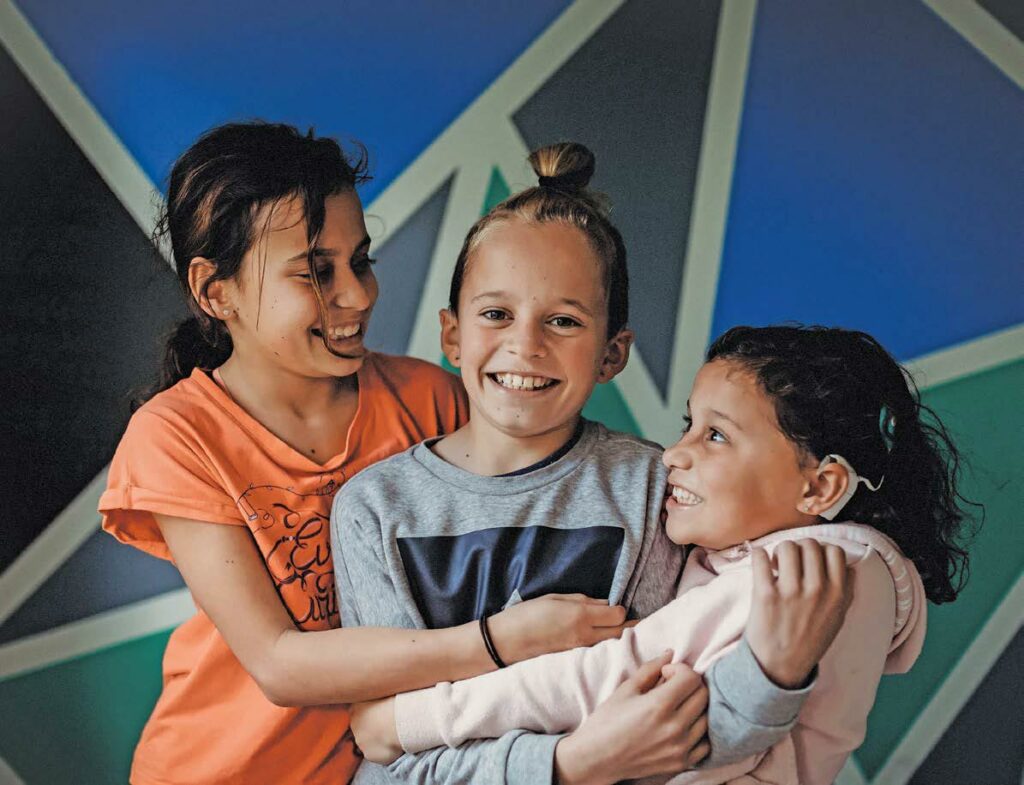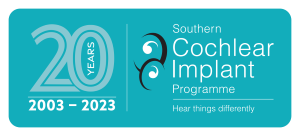The Earl family Nicola, Tony, Olivia, Benji and Sadie are the Earl family of New Plymouth, in Taranaki. The two youngest children are both profoundly deaf, but this hasn’t slowed down the active family as both Benji and Sadie now have access to hearing through bi-lateral cochlear implants. When Benji was born, Nicola had a feeling that something just wasn’t right.

The Earl Family
“It was gut instinct,” she explains. “He wasn’t reacting in the same ways his big sister Olivia had at the same age, so we took him in for an audiology assessment.
“He was diagnosed at six-weeks-old and there were feelings of grief and the unknown,” she adds. “We didn’t really know what life would be like for Benji then; no one in our family had hearing loss and we weren’t sure what would be the best way to move forward.”
Following the diagnosis, Nicola and Tony met with a Deaf Advisor who talked them through options and when they learned about cochlear implants they decided it was the right choice for Benji. “We wanted to give Benji better access to hearing and spoken language,” says Nicola.
“Being more connected to whānau, having the chance to do well at school and being a part of his community were important things we wanted to enable for him.”
When Benji was nine-months-old, the Earl family made the trip to the Southern Cochlear Implant Programme in Christchurch for his first implant.
“The team just blew us away,” says Nicola. “We were nervous about him having surgery and didn’t know what to expect, but they supported us every step of the way.”
With no idea what to expect when his implant was switched on, Nicola and Tony were surprised and excited by how quickly it made a difference.
“He literally had no sound and from the moment his implant was activated he was able to hear us,” she says.
With two children the Earl family schedule was a busy one, but with Benji enabled to hear, they quickly fell into routines – day care, work and lots of sports and activities. “Benji thrived,” says Nicola. “It was wonderful to see him reaching milestones and being a communicative and happy boy.”
So when Nicola discovered she was pregnant with their third child, the family readied themselves to add to their busy lives and excitedly awaited the arrival of Sadie. But in what Nicola calls ‘a bolt from the blue’, new born hearing screen picked up that Sadie too, was profoundly deaf. So began another implant journey, this time for Sadie.
“It was all a bit of a whirlwind,” says Nicola. “But we had seen how the implant had helped Benji and we wanted the same for Sadie.”
By 2014 both Benji and Sadie had one implant each, but Nicola and Tony knew that having two implants would likely help their children even more, and so they embarked on a huge fundraising effort to raise $100,000 to enable second implants.
“We knew the difference one implant could make, so we wanted to give them every opportunity we could by them both having two,” says Nicola. “We treated it like a job – we were determined to make the campaign work for them.”
The community, their whānau, friends, schools and colleagues all rallied around them and soon they had raised half the amount they needed. It was then that a change in Government funding meant that Sadie was eligible for a second funded implant, and they had enough money to pay for Benji’s. Within a few months, both Benji and Sadie had second implants and Nicola was surprised at the difference it made.
“We didn’t expect it to be so impactful, but having the bilateral implants gave them better access to directional sound. Since then they have fully immersed themselves in typical kidlife.
“They’ve tried everything,” Nicola laughs. “Karate, hockey, dancing – you name it!
“And their spoken language and learning is so good – we really put that down to early implantation,” says Nicola. “While we acknowledge they are deaf – that is part of who they are – I don’t think they would have done as well in mainstream school and in their activities without implants. “We will never know what the world sounds like for them, but the main thing is there is sound! The cochlear implants have enabled better outcomes for them both and we are grateful every day for the opportunities that are open to them.”

